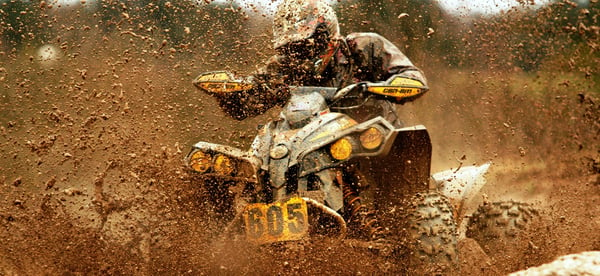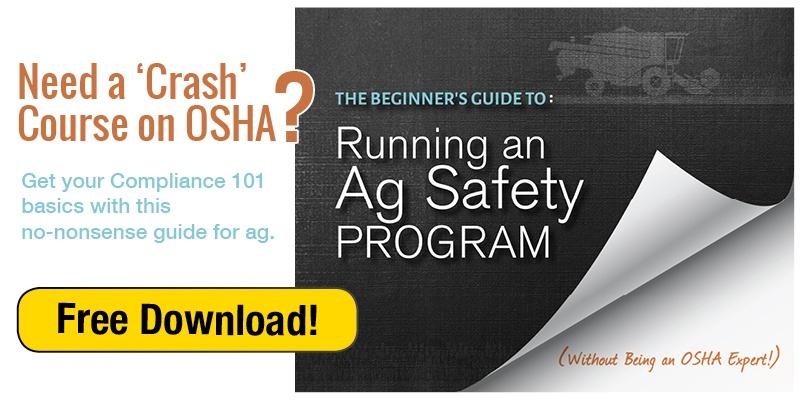When you think of all-terrain vehicles (ATVs), the first thoughts that come to mind are whipping around corners, kicking up dirt and zipping through forest trails—all activities that, though fun, can result in accidents.

But not all ATV hazards can be attributed to reckless riding. In fact, if you're using an ATV for more everyday farm-family work—such as traveling back and forth to a remote work site or ferrying tools and supplies—careful preparation becomes just as important as careful operation.
So before you hit the trails or the fields, follow these safety tips to prevent common ATV accidents.
Gear Up
ATV safety starts with making sure you wear the right gear. Suit up for your trek with heavy-duty gloves, a long-sleeved shirt and durable, long pants. These articles of clothing will keep brush, sharp grass, rocks and other rough objects from tearing your skin while you are on the move.
You should also wear sturdy footwear. Choose boots that provide both protection from the elements and the flexibility to move freely for easy shifting and quick maneuvering. Rugged farm-safety boots should do the trick.
Most importantly, wear a helmet. Ideally, you should wear a thermoplastic, DOT-certified helmet, designed specifically for ATV operation. It should not be too loose and should fit comfortably on your head. A face shield or goggles are always a good supplement to keep rocks, dust and bugs out of your eyes.
Naturally, if you expect to encounter tough weather conditions, such as rain, snow or cold, make sure you're prepared by packing additional attire.
Pack Safety Equipment
Another important aspect of ATV safety is making sure you have the right equipment with you at all times—especially, your operator's manual and a safety kit.
Your operator's manual contains vital information regarding everything from approaching hazardous terrain to troubleshooting mechanical issues. Tuck it away in your ATV's storage compartment for quick reference.
Should you become stranded or hurt, a safety kit could be your lifeline. It should include both emergency and first-aid supplies, such as:
- Cellular phone
- Bandages and gauze
- Plenty of water and water-purification tablets
- Map
- Flashlight and signal flare
- Knife
- Matches
- Tools
- Electrical tape
- Spark plugs
- Extra oil
- Tire-repair kit
Never take off without your operator's manual and safety kit in tow.
Inspect to Protect
Before you ride, you'll want to do a quick 360-degree walk-around of your ATV. It's easy for mud, grime and other obstructions to hinder controls or loosen parts. So, keep an eye out for damaged guards, broken brackets or loose bolts. If you don't expect to be back until nightfall, check your headlights and taillights for damage as well.
Your oil level and tire pressure should be set to the manufacturer's recommendations to ensure efficient operation. If it's your first ride, read all the warning labels first so there aren't any surprises. They're there to protect you.
Last, hop on and check all controls and brakes. If everything's working as it should, you're ready to ride!
Though you're not riding for sport, that doesn't make ATVs any less dangerous. With the right attire, proper safety equipment and sufficient inspection, you're on your way to a long, productive workday. Follow these tips, and keep safety top of mind before and during your ride.
Check out how Good Day's Work can help keep your farm OSHA compliant with our training video on ATV Safety!


